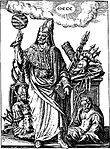
Hermes Trismegistus is a legendary Hellenistic period figure that originated as a syncretic combination of the Greek god Hermes and the Egyptian god Thoth. He is the purported author of the Hermetica, a widely diverse series of ancient and medieval pseudepigraphica that lay the basis of various philosophical systems known as Hermeticism.

Hermeticism or Hermetism is a philosophical and religious system based on the purported teachings of Hermes Trismegistus. These teachings are contained in the various writings attributed to Hermes, which were produced over a period spanning many centuries and may be very different in content and scope.

The Hermetica are texts attributed to the legendary Hellenistic figure Hermes Trismegistus, a syncretic combination of the Greek god Hermes and the Egyptian god Thoth. These texts may vary widely in content and purpose, but are usually subdivided into two main categories, the "technical" and "religio-philosophical" Hermetica.

The Corpus Hermeticum is a collection of 17 Greek writings whose authorship is traditionally attributed to the legendary Hellenistic figure Hermes Trismegistus, a syncretic combination of the Greek god Hermes and the Egyptian god Thoth. The treatises were originally written between c. 100 and c. 300 CE, but the collection as known today was first compiled by medieval Byzantine editors. It was translated into Latin in the 15th century by the Italian humanist scholars Marsilio Ficino (1433–1499) and Lodovico Lazzarelli (1447–1500).

Poimandres is the first tractate in the Corpus Hermeticum.
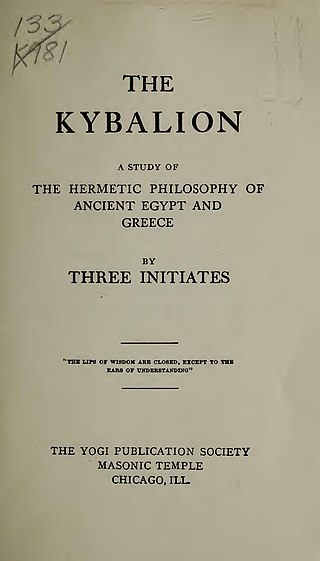
The Kybalion is a book originally published in 1908 by "Three Initiates" that purports to convey the teachings of Hermes Trismegistus.
The Tree of Life is a diagram used in Kabbalah and various other mystical traditions. It is usually referred to as the Kabbalistic tree of life in order to distinguish it from the biblical tree of life and the archetypal tree of life found in many cultures.
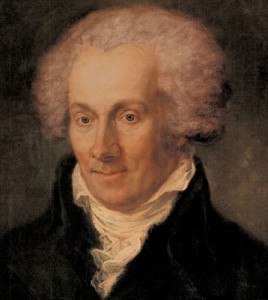
Karl von Eckartshausen was a German Catholic mystic, author, and philosopher.

This is a comparative religion article which outlines the similarities and interactions between Hermeticism and other religions or philosophies. It highlights its similarities and differences with Gnosticism, examines its connections in Islam and Judaism, delves into its influence on Christianity, and even explores its potential impact on Mormonism. In essence, it unveils how Hermeticism has engaged with, influenced, and been influenced by a diverse array of spiritual and philosophical traditions throughout history.

The Definitions of Hermes Trismegistus to Asclepius is a collection of aphorisms attributed to the legendary Hellenistic figure Hermes Trismegistus, most likely dating to the first century CE.

The Rosary of the Philosophers is a 16th-century alchemical treatise. It was published in 1550 as part II of De Alchimia Opuscula complura veterum philosophorum (Frankfurt). The term rosary in the title is unrelated to the Catholic prayer beads; it refers to a "rose garden", metaphoric of an anthology or collection of wise sayings.
Johannes Bredenburg (1643–1691) was a Rotterdam wine merchant and weaver who was a member of the Collegiants. The philosopher Spinoza had joined the Collegiants and his ideas became the source of a division in the membership so that they broke into two parties. The Spinozist party was led by Bredenburg and the opponents by Frans Kuyper. These two parties were reunited on the death of their leaders.
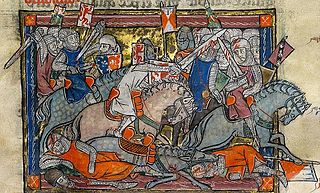
The Rochefoucauld Grail is a four-volume 14th-century illuminated manuscript. Three volumes were formerly Amsterdam, Bibliotheca Philosophica Hermetica, MS 1; the fourth volume is divided between the Bodleian Library in Oxford and the John Rylands Library in Manchester. It contains the Lancelot-Grail cycle in French prose, the oldest and most comprehensive surviving version of the legend of King Arthur and the Holy Grail. The leaves are about 405 mm by 295 mm, and are written in two columns, by a number of scribes.
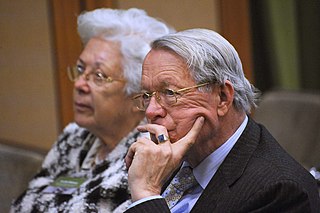
Joost R. Ritman is a businessman from the Netherlands. Ritman made his fortune with his family company De Ster, selling plastic tableware to airlines. He is the founder of the library Bibliotheca Philosophica Hermetica in Amsterdam. In 1995 he received the Laurens Janszoon Costerprijs. He was knighted in the Order of the Dutch Lion in 2002.
Johann Baptist Großschedl von Aicha was a German nobleman, alchemist and esoteric author. The German "von Aicha" is a later supposition from the Latin "ab Aicha" on his publications, which may be related to Aiglsbach in Bavaria and the "Grossehedl von Perckhausen und Aiglspach" nobility, who originally came from Regensburg.
Adam Haslmayr was a German writer, who was the first commentator of the Rosicrucian Manifestos. He called the revelation of Paracelsus the "Theophrastia Sancta".

Alexander von Suchten was an alchemist, doctor and writer.
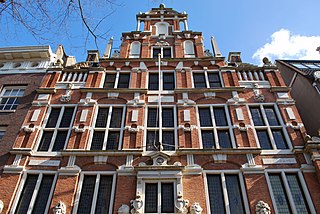
The Embassy of the Free Mind is a museum, library and platform for free thinking, inspired by the philosophy of the Bibliotheca Philosophica Hermetica collection. The museum focusses on the European culture of free thinking of the past 2.000 years, with Hermetic wisdom as the source of inspiration: insight into the connection between God, cosmos and man. This connection is reflected in the Hermetic, alchemical, astrological, magical, mystical, kabbalistic and Rosicrucian texts and images in the collection.

The Prayer of Thanksgiving is a Hermetic Gnostic prayer text preserved in Coptic, Greek and Latin.


